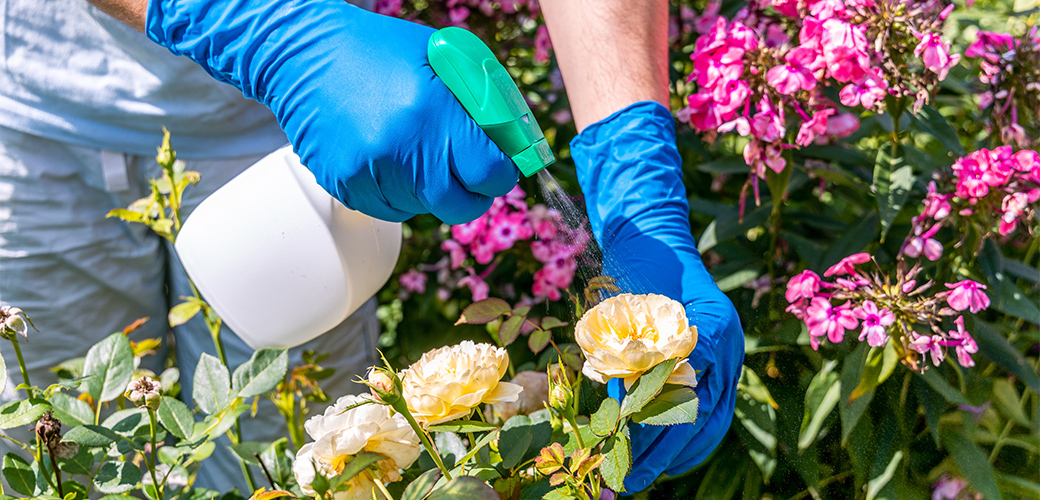

As the weather warms, we start to see more of our smallest neighbors—insects. While these tiny creatures are an essential part of our ecosystem, their populations can sometimes grow out of control, becoming a nuisance or even a danger. In these cases, many turn to chemical defense in the form of insecticides to keep the bugs at bay. However, these chemicals can be attractive to our naturally curious pets. Use these tips to keep your pet safe while using chemicals in or around your house.
Read the fine print. One of the most important pieces in choosing and using an insecticide is the label. The label will indicate the active ingredient, what insects it targets, whether it is for indoor or outdoor use, how to prepare the chemical and how much to use. Read and follow the instructions carefully, as doing so increases the safety factor. If using a Pest Control Officer (PCO), talk with them about precautions and risks with products they may use.
Let it dry. Insecticides have the highest risk for animals while they are still wet and lower risk once dried. To keep your pets safe, it is best to keep them away from the treated area until the insecticide has dried completely. Avoid applying insecticides when it is raining, as this can prevent the chemical from drying properly. Some products need to be watered after application, which can increase the drying time.
Dilution is the solution. When using insecticides, it is important to use them at the lowest percentage needed to work. Higher concentrations do not always mean higher effect. Insecticides that come in liquid or spray form may need to be diluted before use, while others come in a “ready-to-use” formulation. If you have concerns about properly mixing a concentrated product, “ready-to-use” products may be the way to go. If you do need to dilute, do this in a well-ventilated area or outside. For granular insecticides, avoid placing them in large piles and follow instructions if they require watering. If applying insecticides indoors, make sure to open windows and turn on fans for proper ventilation. Only use and apply insecticides to areas of need and try to avoid hard surfaces like concrete or roads that can have runoff.
Shield your pet. When treating your home with insecticides, keep your pet in a separate part of the house until you’re completely finished, the chemicals are dry and you’ve put them away. Never spray any chemicals near your pet’s water or food bowl and pick up toys and place them away from treatment areas until it’s safe.
When mixing or applying products without a PCO, change your clothes and wash your hands before interacting with your pets and if you step in wet product, remove shoes before walking in areas that they will be. Notify everyone in the household or your neighbors of the application of insecticides so everyone knows when the area is safe for pets again.
Lock it up. Its best to store products in a locked closet off the lower shelves. Never transfer a product to a new container and place empty containers in outdoor trashcans. If using bait stations, they should also be placed in a location that cannot be accessed by a pet.
Save the receipt. In the event that your pet either ingests or physically gets into insecticides—potentially by accidentally rolling in or being splashed by insecticides—having a record is helpful to determine next steps. This can be with the physical packaging, receipt, pest control contract or a picture of the product. If you keep insecticides in your home, it’s best to keep this information handy:
- The product name
- Active ingredient(s)
- EPA Regulation Number – often near the active ingredients
- How the product was diluted
- When and where the product was applied
If you believe your pet has ingested anything toxic, please contact your veterinarian or the ASPCA Animal Poison Control Center at (888) 426-4435 immediately.
Source: Read Full Article



